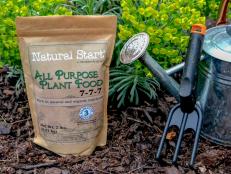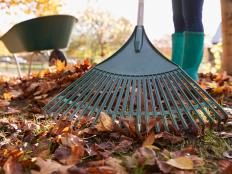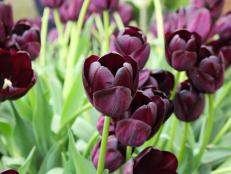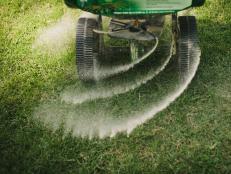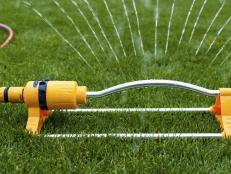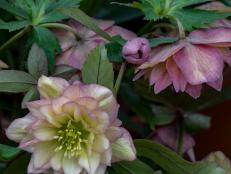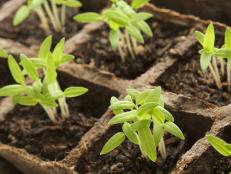Caring for Your Lawn Year-Round
Use this seasonal guide to keep your lawn and other outdoor spaces healthy throughout all four seasons.
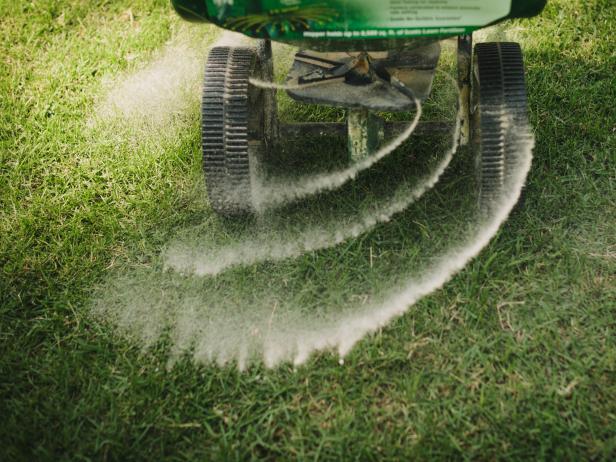
Image courtesy of Ben Rollins.
This planner outlines the different lawn care tasks that should be performed throughout the year. Follow these simple seasonal guidelines to make sure that your lawn looks healthy and green all year round.
Spring
Spring is the season when a lawn really needs some tender loving care as temperatures rise and the grass starts to grow, increasing its reliance on water and fertilizer.
1. Laying turf and sowing seed: Early spring is a good time for turf laying because the risk of frost is lower, making the soil more workable. Spring is also the ideal time for sowing seed as the soil warms up and there is usually enough rain to support germination.
2. Feeding: A spring feed is essential to keep the lawn looking green. There are many pre-packaged feeds available - the main ingredient is nitrogen, which encourages strong growth.
3. Watering: Toward the end of spring it may be necessary to water occasionally if the last few months have been dry.
4. Mowing: Cut the grass regularly, ensuring that the mower is raised to its highest setting for the first few cuts.
5. Scarifying: Lightly scarify — or remove the layer of dead grass that has accumulated throughout the winter — the lawn, using a spring-tined rake or a mechanical scarifier to remove dead grass (thatch).
6. Aerating: Use a fork or aerator to spike the lawn: this allows air to circulate at the grass roots and breaks up compacted soil.
7. Laying turf: Spring is the ideal time to lay turf as the weather warms up and showers reduce the need for watering.
Summer
Summer is the period when grass is at its most stressed, which means that some operations, such as scarifying or aerating, should be avoided in periods of drought.
1. Feeding: If necessary, lawns can receive another dose of fertilizer during the summer, but only if rainfall is predicted. In extremely dry or hot weather fertilizer will scorch and stress the lawn. As an alternative to granular fertilizer, liquid feeds, such as kelp tonics can be applied.
2. Watering: To keep the lawn looking green during a dry summer, it may be necessary to water it either with an irrigation system or manually with a garden hose. However, lawns can recover quickly from drought, and to conserve water, try to avoid watering except in extreme conditions.
3. Mowing: Lawns will need mowing once or twice a week, although this should be stopped during extremely dry periods.
4. Weeding: Continue to remove pernicious weeds, such as dandelions, by digging them out of the ground, taking care to remove the whole root. Others, such as speedwell, clovers, and daisies, usually need spraying to remove them-this should be avoided during periods of drought.

Photo by Julie Martens Forney
Fall
This is the key season for lawn renovations. Fall care will help to ensure that the lawn survives the low temperatures of winter. It will also help the lawn to recover from its heavy usage during spring and summer.
1. Feeding: Whereas spring feeds are high in nitrogen to encourage the lawn to grow, the key ingredient in fall feeds is potassium because this encourages strong growth and will toughen up the grass for winter.
2. Top-dressing: Spread a good quality top-dressing evenly over the lawn, and then brush into the holes created by aerating; ensure that it is all brushed in, otherwise it will kill the grass. Commercial mixes can be bought, but you can make your own by mixing sand, good quality compost, and loam.
3. Mowing: Lawns will still need an occasional cut on a high setting. The last cut of the year should be in late fall.
4. Raking: Once you have raked up fallen leaves, shred them using a rotary mower and add them to the compost.
5. Scarifying: Use a spring-tined rake or a mechanical scarifier to rip the thatch out of the lawn. Scarify in two directions, the second time deeper than the first; this scarification should be more vigorous than the spring scarification. Rake up all the removed thatch, and add it to the compost heap.
6. Aerating: The lawn should be spiked down to about 3 to 4 inches (8 to 10 cm) with either a fork or a mechanical aerator. Solid tining should be done every year, and about every three or four years hollow tining can be performed instead.
7. Renovating turf: This is a good time to lay turf or seed the lawn since the soil will be warm. This should also allow enough time for the lawn to establish itself before the onset of winter. Patches can be returfed, and hollows and bumps smoothed out. Sow grass seed on bare patches of lawn.
Winter
There is little to do with the lawn during winter; avoid walking on it during frosty periods since this can leave black marks where the grass will eventually die back.
1. Laying turf: Turf can be laid during winter, but avoid doing this in periods of extreme cold and frost; it may become impossible to prepare the underlying soil properly.
2. Picking up leaves: In mild conditions any remaining fallen leaves should be removed because they block out the light, killing the lawn. Leaves can be sucked up with a mower or raked up and added to the compost heap.
3. Start digging: During mild spells in winter, dig up areas that are going to become lawn in preparation for laying the turf in spring.







